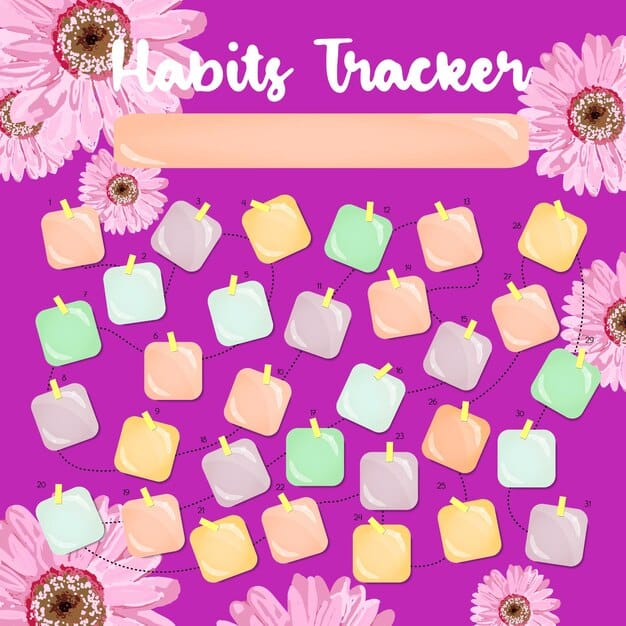Kanban Boards: Visualize Workflow and Boost Productivity

Kanban boards effectively visualize workflow and track progress, enhancing team collaboration and optimizing task management for increased productivity, providing a clear overview of project stages.
Unlock the secrets to streamlined workflow and enhanced productivity with Kanban boards. This visual system helps you track progress effectively, ensuring projects stay on course and teams collaborate seamlessly.
What is a Kanban Board?
A Kanban board is a visual project management tool designed to help teams visualize their workflow, limit work in progress, and maximize efficiency. It’s a simple yet powerful way to track tasks as they move through different stages of a process.
The Core Principles of Kanban
The Kanban method revolves around a few core principles that make it highly effective. These principles are designed to promote visibility, flow, and continuous improvement.
- Visualize the Workflow: Making the workflow visible helps everyone understand the process and identify bottlenecks.
- Limit Work in Progress (WIP): Reducing WIP allows teams to focus on completing tasks rather than starting new ones. This improves flow and reduces lead times.
- Manage Flow: Monitoring and managing the flow of work helps to identify and address issues that impede progress.
- Make Process Policies Explicit: Clearly defining the rules and policies of the process ensures everyone is on the same page.
By adhering to these principles, Kanban boards enable teams to work more efficiently and deliver better results.
Benefits of Using Kanban Boards
Implementing Kanban boards offers a multitude of benefits that can transform the way teams manage their work. These benefits range from increased transparency to improved collaboration.
Increased Transparency
Kanban boards provide a clear, visual representation of the team’s work. Everyone can see the status of each task, who is responsible for it, and any potential roadblocks. This transparency fosters trust and accountability within the team.

Improved Collaboration
With a shared view of the workflow, team members can easily collaborate and support each other. They can quickly identify bottlenecks and work together to resolve them. This collaborative environment leads to better outcomes and more engaged team members.
Ultimately, the benefits of using Kanban boards extend beyond just task management, creating a more efficient and collaborative work environment.
Setting Up Your First Kanban Board
Creating your first Kanban board doesn’t have to be complicated. Whether you choose a physical or digital board, the key is to keep it simple and focus on visualizing your workflow.
Choosing a Board Type: Physical vs. Digital
Physical boards use sticky notes on a whiteboard or wall, while digital boards utilize software applications. Each has its own advantages.
- Physical Boards: Simple to set up, tactile, and highly visible. Great for small teams working in the same location.
- Digital Boards: Offer more flexibility, remote accessibility, and integrations with other tools. Ideal for distributed teams and complex projects.
- Hybrid Approach: Combine the benefits of both by using a physical board for daily stand-ups and a digital board for detailed tracking and reporting.
Consider your team’s needs and preferences when choosing the right board type.
Customizing Your Kanban Board
Once you’ve set up your basic Kanban board, you can customize it to better suit your specific needs. Customization can involve adding more columns, using color-coding, and implementing WIP limits.

Adding Swimlanes for Different Project Types
Swimlanes are horizontal lanes that divide the board into sections, allowing you to manage different types of tasks or projects separately. This is particularly useful for teams working on multiple initiatives simultaneously.
Using Color-Coding to Prioritize Tasks
Color-coding tasks can help you quickly identify priorities and track different types of work. For example, you might use red for urgent tasks, blue for routine tasks, and green for completed tasks.
Customizing your Kanban board ensures it remains a relevant and effective tool for your team.
Advanced Kanban Techniques
As you become more familiar with Kanban, you can explore advanced techniques to further optimize your workflow. These techniques include implementing service level agreements (SLAs) and using Kanban metrics to track performance.
Implementing Service Level Agreements (SLAs)
SLAs define the expected time for completing certain types of tasks. By setting SLAs, you can ensure that critical items are handled promptly and that customer expectations are met.
Using Kanban Metrics to Track Performance
Kanban metrics, such as lead time and cycle time, provide valuable insights into the efficiency of your workflow. Monitoring these metrics can help you identify areas for improvement and measure the impact of changes.
By mastering these advanced techniques, you can unlock the full potential of Kanban and achieve even greater levels of productivity.
Kanban Boards in Different Industries
The versatility of Kanban boards makes them applicable across a wide range of industries. From software development to healthcare, teams are using Kanban to improve their workflow and deliver better outcomes.
Software Development
In software development, Kanban boards are used to manage the development process, track bug fixes, and coordinate releases. The visual nature of Kanban helps teams stay aligned and respond quickly to changes.
Healthcare
In healthcare, Kanban boards are used to manage patient flow, track medical supplies, and coordinate staff schedules. By visualizing the workflow, healthcare providers can improve efficiency and provide better patient care.
The adaptability of Kanban boards allows them to be tailored to the specific needs of any industry.
| Key Point | Brief Description |
|---|---|
| 🚀 Visualize Workflow | Kanban boards offer a clear, visual overview of your workflow stages. |
| ⏱️ Limit WIP | Reducing Work in Progress (WIP) helps improve focus and reduces lead times. |
| 🤝 Enhance Collaboration | Kanban boards foster better team collaboration and communication. |
| 📊 Track Progress | Metrics like lead time help track efficiency and identify areas for improvement. |
Frequently Asked Questions (FAQ)
What is the difference between Kanban and Scrum?
Kanban focuses on continuous flow and visualizing work, while Scrum is a framework with specific roles, events, and time-boxed iterations. Scrum is more prescriptive, whereas Kanban is more flexible and adaptable.
How do I choose between a physical and digital Kanban board?
Consider your team’s location, project complexity, and need for integration. Physical boards are great for colocated teams, while digital boards offer remote access and advanced features.
How can I effectively limit Work in Progress (WIP)?
Set explicit WIP limits for each column on your Kanban board. Monitor the flow and adjust limits as needed to prevent bottlenecks and ensure tasks are completed efficiently.
Can Kanban be used for personal productivity?
Yes, Kanban can be adapted for personal use to manage tasks, track progress, and visualize your workflow. Use a simple board with columns like “To Do,” “In Progress,” and “Done.”
What are some common mistakes to avoid when using Kanban?
Avoid overloading columns with too many tasks, neglecting to update the board regularly, and failing to monitor key metrics. Regularly review and adjust your Kanban process for optimal results.
Conclusion
Kanban boards are a valuable tool for visualizing workflow, tracking progress, and enhancing team collaboration. By understanding the principles and techniques outlined in this guide, you can effectively implement Kanban boards in various industries and improve productivity.





